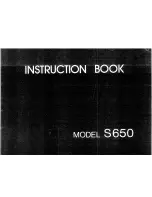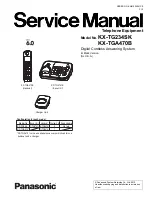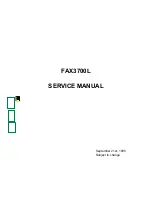
router, a DECnet router, a bridge, and so on, when the associated service is
enabled.
On HP routers, routing services should be used when possible for their band-
width-conserving value, and they must be used for links between dissimilar
physical-layer and data-link-layer operations. Bridging is usually required as
well for unsupported protocols and for such services as synchronous
pass-through.
Bridging
With bridging enabled, an HP router provides protocol-transparent bridging
between similar LAN types, such as Ethernet to Ethernet. It learns the
location of nodes on the network—based on their data-link-layer
addresses—and builds a dynamic bridging table for use in deciding whether
or not to forward an incoming frame. Frames may be bridged to other LANs
that are local or located at a remote site over wide area connections. It is
possible to use the HP router solely as a bridge by not enabling any of the
routing services.
As an Ethernet/IEEE 802.3 transparent bridge (or learning bridge), an HP
router supports a variety of filtering options at the MAC layer, such as
source and destination address and protocol type. The IEEE Spanning Tree
Protocol (STP) is available for management of bridged networks with mesh
topologies. STP allows a bridged network to have redundant paths. In the
event of a primary link failure, a backup link takes over, thereby ensuring
continued data transmission between all reachable network segments.
Translational bridging is used between FDDI and either Ethernet or IEEE
802.3 networks. Source-route translational bridging is used for bridging be-
tween token ring (IEEE 802.5) and Ethernet or IEEE 802.3 networks. These
addressing schemes differ at the data-link layer, specifically at the MAC
layer. For more information about translational bridging, refer to the “Bridg-
ing Service” note and to the “Shining a Light on FDDI” application note in
this manual.
Source-routing bridging is used to connect token rings that contain systems
communicating with non-routable protocols such as IBM SNA or NetBIOS.
Thus, when an HP router is configured for source-routing bridging, it can be
used in any application that would otherwise be performed by an IBM
Source Route Bridge. Transparent (also known as learning) bridging is
always enabled with the bridging software, so that when source-routing
bridging is performed concurrently, the HP router is known as a source-rout-
ing/transparent (SRT) bridge.
Features of HP Routers
Routing Services and Protocols
1-4
Summary of Contents for 600 Series
Page 1: ...Hewlett Packard Series 200 400 and 600 Routers HP Routing Services and Applications ...
Page 4: ......
Page 5: ...1 Product Notes ...
Page 6: ...Features of HP Routers Architecture and Technology Branch Office Routing Product Notes 1 2 ...
Page 38: ...Architecture and Technology Software Control Path Architecture 1 34 ...
Page 52: ...Branch Office Routing Future Directions 1 48 ...
Page 53: ...2 Routing Services Notes ...
Page 106: ...Bridging Service Traffic Prioritization 2 54 ...
Page 158: ...Novell IPX Routing Service NetBIOS Protocol Support 2 106 ...
Page 194: ...Data Compression for WAN Links Conclusion 2 142 ...
Page 195: ...3 Application Notes and Case Studies ...
Page 224: ...Improving Network Availability Application Recovery 3 30 ...
Page 234: ...ISDN Wide Area Network Design Dry Creek Joint Elem School District Performance 3 40 ...
Page 316: ......









































